A sample of the thirty line drawings from The Naked Olympics
All illustrations copyright Lesley Thelander, contact lesleythelander@yahoo.com
Every fourth summer, the sanctuary of
Olympia — a quiet collection of temples and altars in southern Greece —
would be transformed by the Olympic
Games, as some 70,000 spectators, athletes, merchants and hangers-on
descended on the site. The five-day event was a logistical nightmare — as
chaotic as a badly-planned rock festival today. Spectators slept in
canvas tents or in the open air, without any regular water supply or
sanitation; in the blistering summer heat, many died from dehydration,
sunstroke and fever.
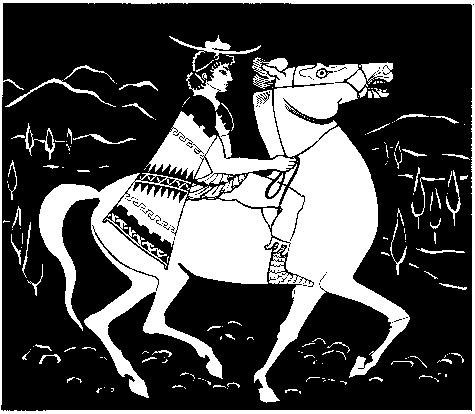
A wealthy spectator en route to the festival. Ancient sports fans had to
be relatively fit just to attend the Olympics; many walked the 210
miles from Athens to Olympia. They arrived to find a venue
that had almost no facilities: the sole inn was reserved for
officials and VIPs, while the famous Olympic Stadium had no seats,
so spectators were forced to stand cheek by jowl for twelve hours a
day beneath the blazing sun.
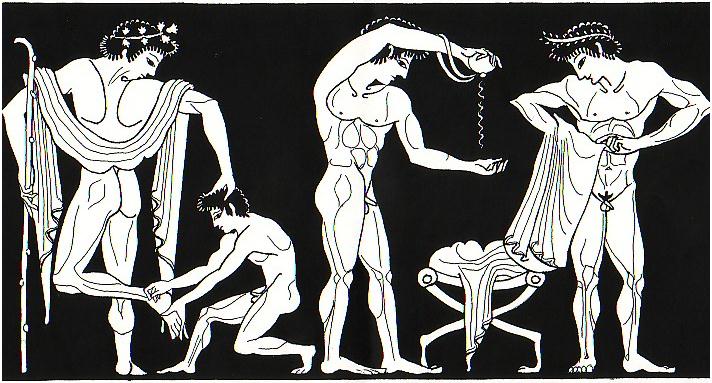
Athletes in the undressing room of a Gymnasium, preparing to cover their bodies with
olive oil. The Greeks themselves had no record of when their
tradition of exercising nude began. Probably originating with
initiation rites, it became a matter of pride for the gleefully
superficial athletes — and was often mocked by foreigners for
promoting sexual degeneracy. The all-male gyms were prime pick
up spots, and a statue of Eros always had pride of place amongst the
Gymnasium altars.
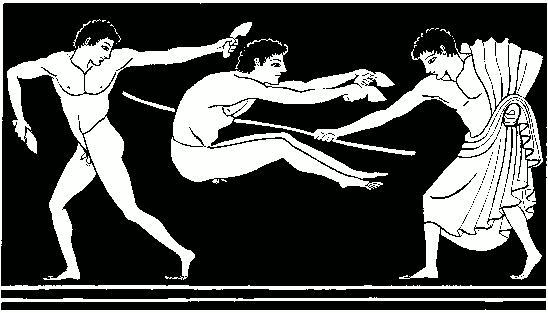
The long jump — a key contest in the ancient pentathlon. The event was performed from a starting
position, using leaden hand weights, and to the sound of flute
music.
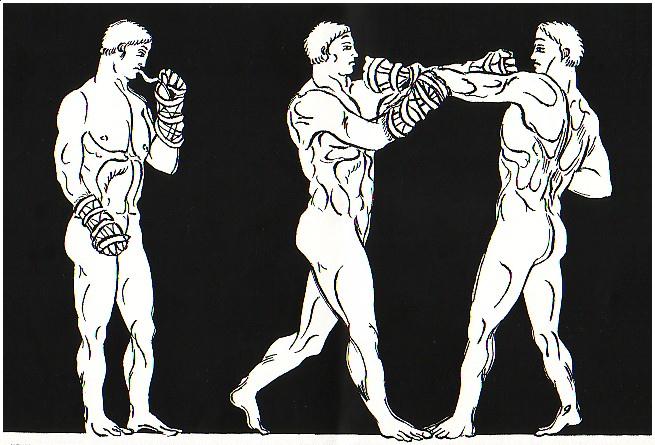
Boxing, the most lethal of Olympic sports. Greek athletes wrapped their fists in leather thongs and
pummeled one another's heads until one contestant surrendered. (Body
blows were against the rules).
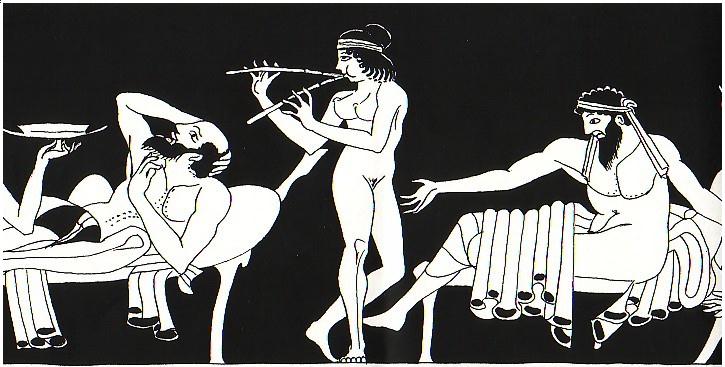
Off the field, the ancient Olympics developed a riotous carnival atmosphere — a round-the-clock
decathlon of partying, drinking and cavorting with hetaeras,
classical geisha girls. The victory parties of athletes were
notoriously debauched, usually lasting all night, with revelers
parading around the sanctuary in drunken conga lines.
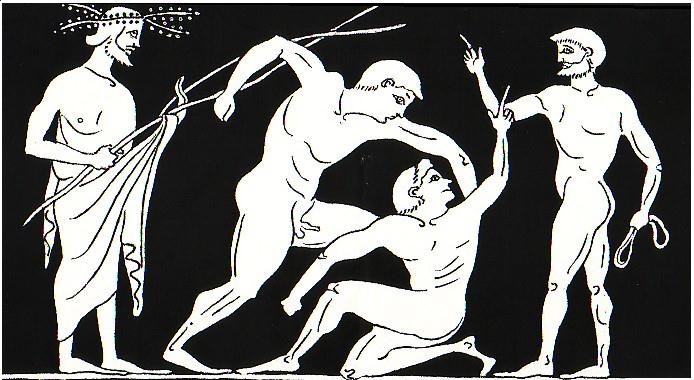
The pankration — a brutal, all-in brawl, where kicking and
strangling were permitted — was the most popular Olympic
event. In this vase illustration, a contestant is reprimanded
for eye gouging, one of the only fouls that was discouraged by the
judges.
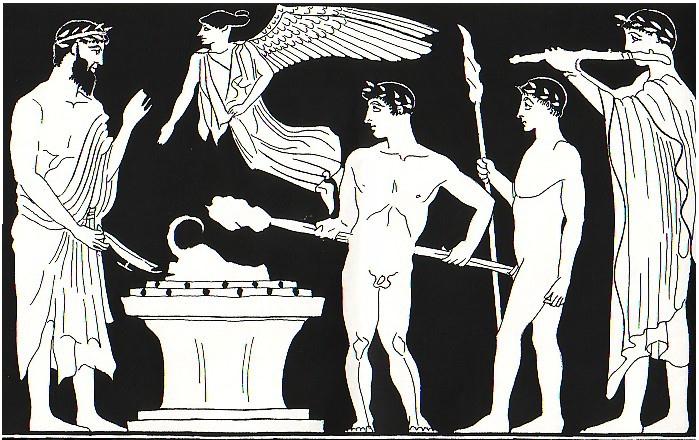
A victorious athlete offers a sacrifice of thanks to the gods.
Greek athletics was inseparable from religion: At the Olympic
festival, sacred processions and rituals, including the sacrifice of
100 oxen to Zeus, took up as much time as the
sports.
Previous
Next







